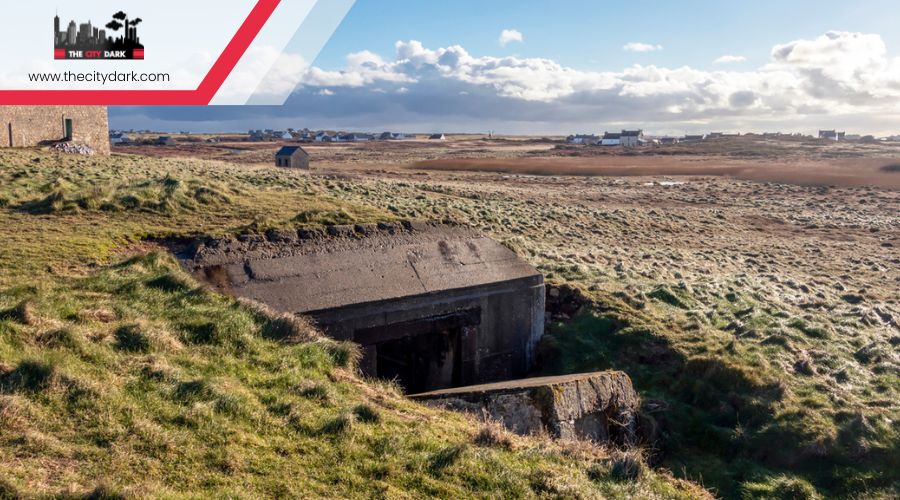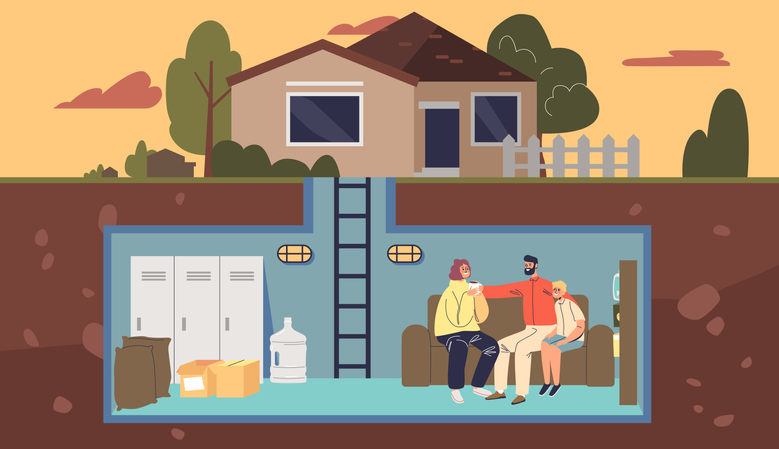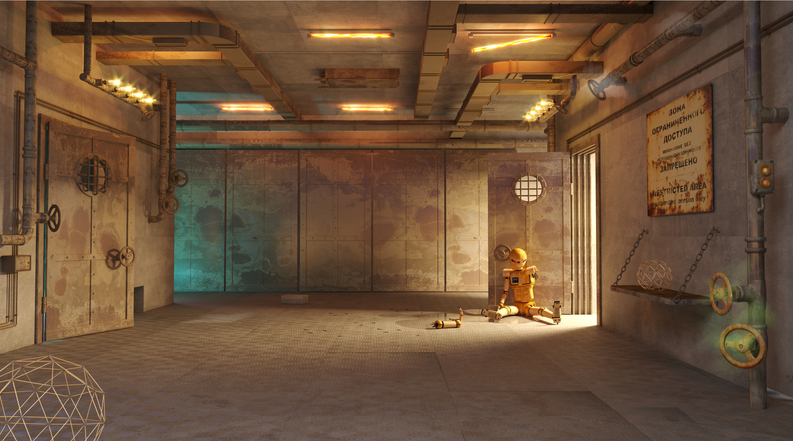Did you know that over 60% of underground shelters may experience significant wear and tear within the first 20 years due to weather and time? You’re probably aware that underground shelters are designed to be durable safe havens, protecting you from extreme weather and unforeseen disasters. However, the very elements they’re built to shield against can also become their undoing.
Changes in temperature, moisture levels, and the relentless passage of time can all impact the structural integrity and functionality of these subterranean retreats. From the silent threat of moisture causing mold and structural damage to the more overt challenges posed by extreme heat or cold affecting the shelter’s internal systems, it’s crucial to understand how these factors come into play.
If you’ve ever considered the longevity and effectiveness of your underground shelter, you’ll want to explore the measures that can safeguard its future, ensuring it remains the safe haven it was designed to be.
Key Takeaways
- Over 60% of underground shelters may experience significant wear and tear within the first 20 years due to weather and time.
- Lack of sunlight in underground shelters affects food production, requiring alternative methods such as artificial lighting systems.
- Underground shelters are susceptible to flooding during heavy rain, rendering them unusable.
- Regular maintenance and inspections are crucial for preserving the structural integrity of underground shelters.
Weathering the Underground
Underground shelters shield you from the harsh impacts of extreme weather, but they’re not immune to weather-related challenges themselves. The lack of sunlight, for instance, directly affects your ability to grow plants and produce food, a vital aspect of long-term survival in such environments. This is where understanding the environmental conditions becomes crucial. Without sunlight, you’ll need to find alternative methods for food production, which could mean investing in artificial lighting systems that mimic natural light.
Additionally, extreme weather doesn’t stop at the surface. Underground, you’re faced with potential overheating or freezing of your electrical systems due to extreme heat or cold. This can lead to a host of problems, including the loss of power and, subsequently, the loss of crucial systems meant to sustain life. To combat this, proper insulation, alongside diligent monitoring and maintenance, is essential. It ensures that the environmental conditions within your shelter remain stable, safeguarding your electrical systems against the extremes.
Temperature Fluctuations’ Impact
While considering the challenges of limited sunlight and extreme weather’s effect on your underground shelter, it’s equally important to understand how temperature fluctuations impact your living conditions and safety measures.
Unlike the surface, your underground haven experiences less severe temperature changes, offering a more stable and cozy environment. However, when extreme weather events usher in bitter cold, you’ll need a heating system to keep warm. This necessity could strain your energy resources, demanding careful planning and efficient use.
In contrast, during scorching weather, your shelter becomes a cool refuge. But don’t overlook the need for a ventilation system. It’s crucial to prevent overheating and ensure the air remains breathable. Remember, the temperature inside affects not just comfort but also the storage of your emergency supplies and food. Proper regulation is key to avoiding spoilage and ensuring your provisions last.
Moreover, extreme temperature fluctuations pose a risk to the structural integrity of your shelter. It’s not just about staying comfortable; it’s about staying safe. The design and construction of your underground retreat must account for these variations, ensuring your shelter remains a secure haven regardless of what’s happening above ground.
Moisture: The Silent Threat
Moisture, often overlooked, poses a significant threat to the stability and safety of your underground shelter. While you might be focused on the benefits of being protected from high-speed winds and flying debris during tornadoes, it’s crucial not to ignore moisture: the silent threat.
Underground shelters are particularly susceptible to flooding during heavy rain, which can render them unusable. Without proper ventilation, the enclosed space can become a breeding ground for mold and mildew, compromising the air quality and the structural integrity of the shelter.
To mitigate these risks, consider the following strategies:
- Ensure proper drainage: To prevent water accumulation around your shelter.
- Install a robust ventilation system: This is critical for controlling humidity levels and ensuring proper air circulation.
- Regularly inspect for leaks and cracks: Early detection and repair can prevent significant water damage.
Time-Induced Deterioration
As you explore the impact of time on underground shelters, you’ll find that material degradation over years is a critical concern. Structural integrity challenges become more pronounced, with moisture playing a significant role in accelerating wear.
Understanding these aspects is key to maintaining the safety and effectiveness of these shelters.
Material Degradation Over Years
Facing the relentless passage of time, underground shelters often undergo material degradation due to environmental factors like moisture and temperature fluctuations. This wear and tear isn’t just about aging; it’s about how external conditions can seep in, weakening the very foundation that’s meant to protect you.
- Moisture and temperature fluctuations can lead to corrosion, which eats away at materials, potentially causing structural damage.
- Regular inspections and maintenance are your best defense, helping to identify issues before they escalate.
- Proper design and construction of shelters are crucial, offering a buffer against time’s effects and ensuring their longevity.
Structural Integrity Challenges
While regular inspections and maintenance can combat material degradation, it’s equally critical to address the structural integrity challenges that stem from time-induced deterioration in underground shelters. Extreme weather not only exacerbates these issues but also increases the likelihood of storm damage impacting the functionality of your shelter.
| Challenge | Mitigation Measure |
|---|---|
| Cable Overheating | Proper insulation and regular maintenance |
| Power Outages | Winterization procedures and resilient design |
| Overload Transformers | Reinforced materials and enhanced ventilation systems |
Moisture Impact Analysis
To ensure the longevity of underground shelters, it’s critical to conduct regular moisture impact analyses, as time-induced deterioration from increased moisture can significantly compromise their structural integrity.
Over time, moisture can lead to the degradation of materials used in the construction of shelters, making them less safe and secure for use. Here’s why moisture impact analysis is paramount:
- *Moisture-related deterioration* can lead to serious structural issues if not addressed timely.
- *Time-induced degradation* of shelter materials necessitates ongoing maintenance and moisture management.
- *Increased moisture* compromises the shelter’s integrity, making regular analysis crucial for safety.
Structural Integrity Over Years
Understanding the structural integrity of underground shelters is key to ensuring their longevity and safety over the years. You need to know that the structural integrity determines how well these shelters stand the test of time, protecting you against the elements and potential hazards. The choice of construction materials and techniques plays a pivotal role. You can’t skimp on quality here; the right materials and construction methods are your shelter’s first line of defense in maintaining its structural integrity over years.
Regular maintenance and inspections are non-negotiable if you’re committed to preserving the structural integrity of your underground shelter. It’s about being proactive rather than reactive; catching issues early can save you a lot of trouble down the line. Remember, environmental factors such as weather, temperature fluctuations, and ground movements are constantly at play, challenging the structural integrity of your shelter over time.
Thankfully, you’re not without options. Advanced monitoring technologies and reinforced structural support systems offer robust solutions to mitigate potential deterioration. Investing in these can significantly bolster the structural integrity of your underground shelters, ensuring they remain safe and secure for years to come.
Preventative Maintenance Measures
Implementing regular preventative maintenance measures is crucial to safeguard the structural integrity of your underground shelter. Weather and time can significantly wear down your safe haven, making it vulnerable to damage. To ensure your shelter remains a secure place during emergencies, you need to be proactive about its upkeep.
Here are some key preventative maintenance measures you should take:
- Regular Inspections: It’s essential to routinely check your shelter for any signs of wear or damage. Look out for cracks, leaks, or any other indicators that the structure may be compromised.
- Sealant and Waterproofing: To prevent water damage, which can be a major issue for underground shelters, make sure that all seams are properly sealed. Reapply waterproofing treatments as needed to keep moisture out.
- Ventilation System Maintenance: A well-functioning ventilation system is critical for air quality and preventing moisture buildup inside your shelter. Clean and inspect your ventilation system regularly to ensure it’s operating efficiently.
Climate Change Considerations
As you consider building an underground shelter, it’s crucial to factor in climate change’s challenges. This includes increased flooding risks and temperature variability.
You’ll need to ensure your shelter is equipped with drought resilience measures, given the unpredictable weather patterns we’re facing.
These considerations aren’t just about comfort; they’re about survival in an ever-changing climate.
Increased Flooding Risks
Given the reality of climate change, you’ll find that underground storm shelters are increasingly vulnerable to flooding during heavy rain. This susceptibility can cause flooding that renders these shelters unusable when you need them most.
Consider these important points:
- Underground shelters are at a high risk of becoming waterlogged during severe weather, potentially causing flooding inside.
- Safe rooms built above ground offer a significant advantage by resisting floodwaters, thanks to their reinforced steel construction.
- Always check for FEMA approval when selecting a safe room, as it indicates a level of protection and reliability against flooding.
Temperature Variability Impact
Climate change is bringing about more extreme temperature swings, which can significantly affect the stability and comfort of underground shelters.
These underground storm shelters, designed to provide safety, now face increased risks due to unpredictable weather patterns. As temperatures soar, cooling systems inside your shelter may be under undue strain, making it less comfortable and potentially habitable. Conversely, cold snaps can freeze your systems and equipment, risking crucial functionality.
You’ll find the need for additional insulation and weatherproofing more pressing than ever, as climate change exacerbates temperature variability. To keep your underground haven safe and comfortable, you might have to upgrade to enhanced climate control systems, ensuring that despite the weather topside, you’re prepared and protected.
Drought Resilience Measures
To tackle the growing challenge of droughts intensified by climate change, it’s essential to adopt water-efficient technologies and practices that conserve our precious water resources.
In your underground shelters, consider how proper airflow can play a crucial role in maintaining a stable and sustainable environment.
- Utilize drought-resistant crop varieties and sustainable farming techniques to keep your food supply secure without exhausting water sources.
- Establish water storage systems designed to capture and store rainwater, ensuring you have access to water during prolonged periods of drought.
- Develop and implement drought contingency plans, emphasizing the importance of being prepared for water scarcity and ensuring a continuous water supply.
Extreme Weather Challenges
Extreme weather poses significant challenges to the integrity and functionality of underground shelters and electrical systems. Whether it’s the scorching heat of summer or the bone-chilling cold of winter, your underground haven and its electrical components face unique threats. But don’t worry, with proper planning and precautions, you can mitigate these risks.
| Weather Condition | Impact on Underground Systems |
|---|---|
| Extreme Heat | Causes cable overheating, increased leakage currents, and transformer overloading. |
| Extreme Cold | Risks freezing and damage to components if not properly insulated. |
| Tornadoes | Underground shelters can withstand up to 250 mph winds and over 3,000 pounds of force, protecting against flying debris. |
| Compliance & Planning | Essential to ensure shelters are equipped with proper ventilation, emergency exits, and adhere to local regulations. |
Technological Solutions for Longevity
Innovative technologies are key to ensuring your underground shelter remains safe and durable against nature’s extremes. With the challenges of extreme weather and the need for self-sufficiency, incorporating advanced technologies can greatly enhance the longevity and effectiveness of underground shelters.
Whether it’s protection from impact winters, tornadoes, or ensuring a stable living environment, the right tech solutions can make all the difference.
Here are some technological advancements to consider:
- Insulation and Climate Control Systems: These are essential for managing extreme heat and cold, ensuring your underground electrical systems are protected and operational.
- Alternative Energy Sources: Solar panels or wind turbines can provide vital power, especially crucial for food production and lighting in the absence of sunlight.
- Advanced Monitoring Systems: To maintain safety and efficiency, installing sensors for air quality, temperature, and structural integrity is crucial.
Case Studies and Lessons Learned
Examining real-world examples sheds light on the practical aspects of underground living, from managing the challenges of an impact winter to addressing sunlight deprivation. You’ve heard about the theoretical advantages and potential pitfalls, but how do these play out in real scenarios? Let’s dive into some case studies that highlight the resilience and innovation required to thrive underground, especially when a storm looms large.
| Case Study | Challenge | Lesson Learned |
|---|---|---|
| Antarctic Research Bases | Extreme cold and storm isolation | Robust electrical systems and insulation are crucial for survival. |
| Underground Bunkers in Tornado Alley | Storm safety and sunlight deprivation | Integrating artificial sunlight solutions can mitigate health risks. |
| Subterranean Habitats in Desert Regions | Extreme heat affecting electrical systems | Cooling systems must be designed to withstand intense temperatures. |
These examples underscore the importance of preparation and innovation in underground living. Whether it’s battling the relentless cold, ensuring safety during a storm, or coping with the intense heat, each case provides valuable insights. Most notably, the critical need for maintaining electrical systems and addressing sunlight deprivation stands out as factors influencing survival and the overall well-being of underground dwellers.
Conclusion
In conclusion, you’ve seen how weather and time can significantly impact underground shelters. From temperature fluctuations to moisture and extreme weather, these elements pose various challenges. However, with proper insulation, regular maintenance, and leveraging technology, you can enhance your shelter’s resilience and longevity.
Remember, staying informed about climate change and incorporating lessons from case studies are crucial. By taking these steps, you’ll ensure your underground shelter remains a safe haven, regardless of what Mother Nature throws your way.





